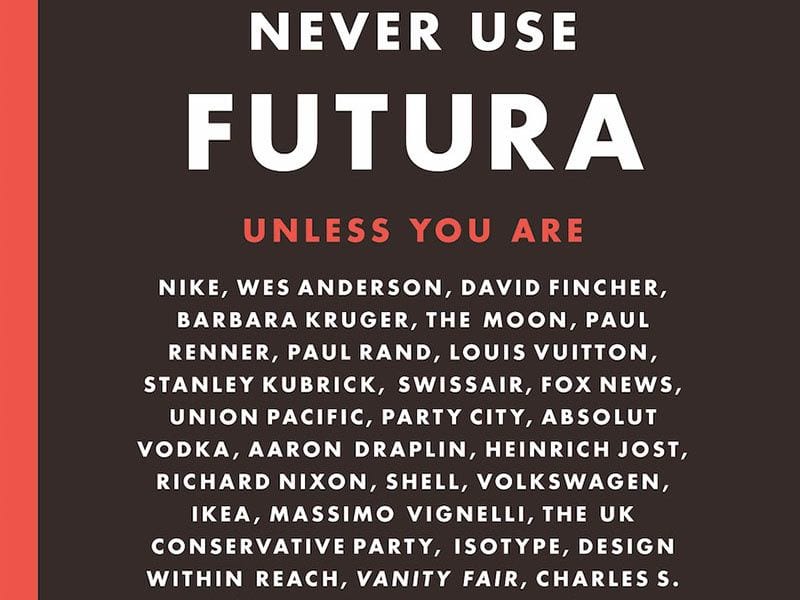First, the title. Never Use Futura is somewhat hypocritical, wrongheaded advice for any graphic designer, not to mention an unusual and perhaps deliberately controversial title for a book that essentially chronicles the history and everyday usage of that ubiquitous typeface. Think of it as “title clickbait”.
Author Douglas Thomas – a professional graphic designer with an MFA from the Maryland Institute College of Art – explains in both the beginning and end of his new book that Never Use Futura was advice bestowed upon him in his early days as a graphic design student. “This legendary typeface instantly transmits familiarity and depth of meaning, but it risks just as many unwanted visual associations,” he writes. “Used uncritically, Futura becomes little more than a fetish for the past or a lazy habit.”
Nevertheless, Futura – the geometric sans-serif typeface designed by Paul Renner and released in the ’20s – is one of the most recognizable and widely used typefaces in history, championed by everyone from Wes Anderson to NASA to USA Today. Introduced nearly a century ago to promote and accompany the new modern age, the font has trickled down into virtually every aspect of our lives.
Breaking down the typeface’s early beginnings, Thomas explains that while Futura was essential in bringing a sense of 20th century modernity to the masses, it soon gained an important sociopolitical foothold in its use for anti-Nazi literature and artwork. Furthermore, the book features a fascinating poster distributed to American designers in 1939 urging them to “Boycott Nazi Type” and “Encourage American Design” with a list of Nazi-made types and their preferred American counterparts (despite the fact that the designs themselves largely followed German fashions).
The chapter “Degenerate Typography” breaks down how Futura has been used for decades in political campaign materials. Richard Nixon’s 1972 presidential reelection campaign relied heavily on Futura, mainly as a way of promoting him as modern and forward-thinking (and it worked, at least until Watergate). Even as recently as last year, presidential candidates from Hilary Clinton to Jeb Bush to Marco Rubio used variations of Futura in their campaigns. Interestingly, Donald Trump, in Thomas’ words, “seemed to care less about the mode of communication than the message itself” with typography that was “loud and inconsistent”. Even his bright red “Make America Great Again” hats used Times New Roman, a graphic design choice Thomas calls “almost an anti-choice”.
One of Futura’s most influential users has undoubtedly been NASA, whose longtime use of Futura has been both legendary and practical. The labels and instructions on all manner of NASA spacecraft were emblazoned with Futura words not just for ease of use – “Futura unified the components of the system,” Thomas writes – but also as a symbol of trustworthiness. “Futura meant that the component had been vetted and approved.”
The chapter “Futura in the Wild” mostly consists of images: signs of business and civic buildings displaying Futura in all its manifestations. Best Buy. Costco. The Baltimore City Fire Department. “Caution: Automatic Door” signs. With the possible exception of shut-ins, the average American consumer encounters a form of Futura several times a day. The mark it has left on civilization is almost frightening.
“Despite this book’s title,” Thomas writes near the end, “you should use Futura. When you do, you’ll find yourself alongside the pantheon of designers, corporations and campaigns that made Futura famous.” Indeed, Futura’s ubiquity makes Never Use Futura an essential handbook on the way the modern world looks and how we read its words.
Rating: 8

